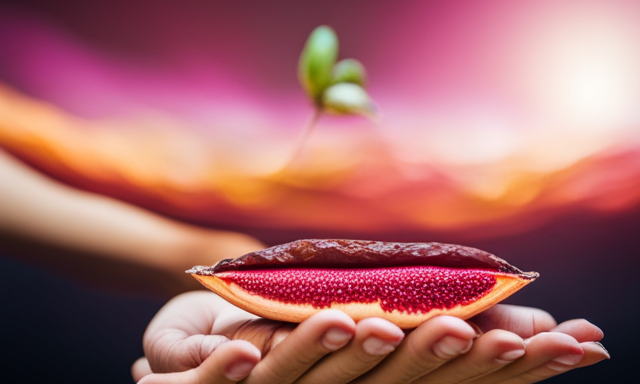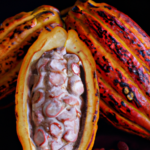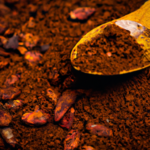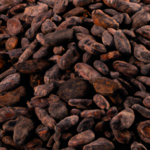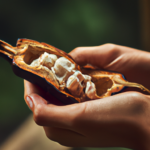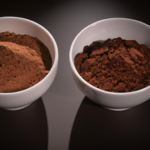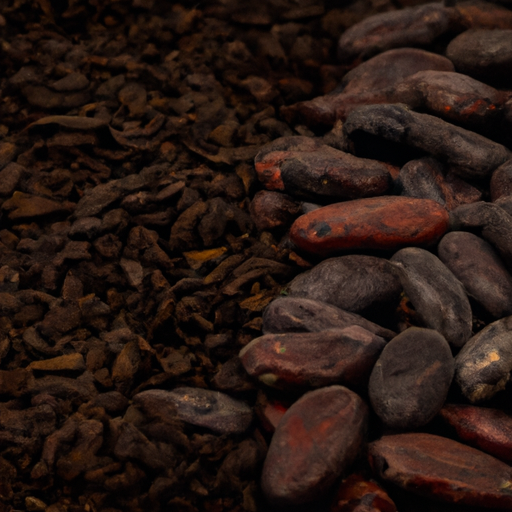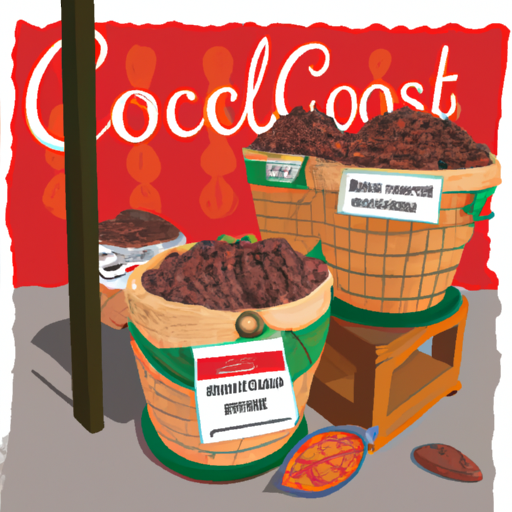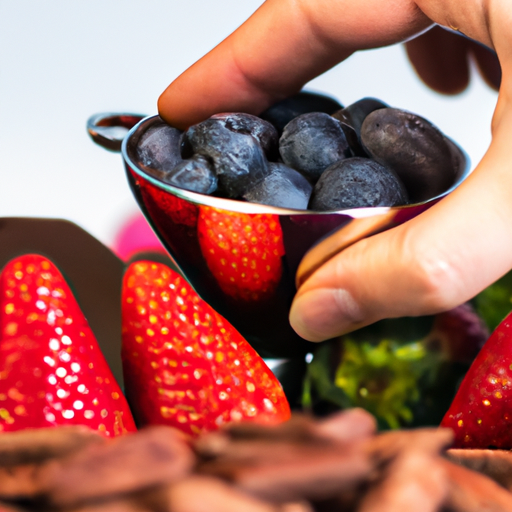Ever thought about how to savor the distinct flavors and health advantages of raw cacao fruit? If so, you’re in luck! In this article, I’ll walk you through the steps of consuming raw cacao fruit like an expert.
As someone who has delved into the world of raw cacao, I am excited to share my knowledge and expertise with you. From selecting the perfect cacao fruit to preparing the seeds for consumption, I will walk you through each step, ensuring that you have a truly unforgettable culinary experience.
Additionally, I will dive into the different flavors and varieties of raw cacao, as well as the numerous health benefits it offers. Furthermore, I will touch upon the importance of sustainability and ethical considerations when consuming raw cacao.
So, get ready to explore the delicious world of raw cacao fruit and discover new ways to incorporate it into your diet. Let’s get started!
Key Takeaways
- Choose ripe cacao fruits with deep, rich color and firm texture, and a sweet aroma.
- Crack open the cacao pods carefully to reveal the precious cacao beans inside.
- Ferment and dry the cacao seeds to enhance their flavor before consuming.
- Enjoy the health benefits of raw cacao, such as high antioxidants, cardiovascular health support, mood enhancement, and rich nutrients.
Understanding the Raw Cacao Fruit
To truly appreciate the unique flavors and textures of the raw cacao fruit, you’ll need to delve into its fascinating origins and discover the hidden wonders within. Understanding raw cacao cultivation, processing, and storage is crucial in unraveling the secrets of this extraordinary fruit.
The journey begins with the cultivation of cacao trees in tropical regions, where the fruit’s pods are carefully harvested and opened to reveal the cacao beans nestled inside. These beans undergo a meticulous fermentation and drying process before being shipped to various destinations for further processing.
Exploring the history and cultural significance of raw cacao unveils its deep-rooted ties to ancient civilizations and the traditions that have shaped its modern-day consumption.
Now, let’s move on to the next step of selecting the perfect raw cacao fruit.
Selecting the Perfect Raw Cacao Fruit
When choosing the ideal cacao fruit, you’ll want to look for one that is ripe and has a vibrant color. The ripeness of the fruit is crucial as it determines the flavor and quality of the cacao beans inside. Here are three key factors to consider when selecting ripe cacao:
- Color: A ripe cacao fruit will have a deep, rich color, usually ranging from yellow to orange. Avoid fruits with a green or pale color as they are likely underripe.
- Texture: Gently squeeze the fruit to feel for firmness. Ripe cacao fruits should have a slight give but still maintain their shape.
- Aroma: Smell the fruit to detect a sweet, fruity fragrance. A ripe cacao fruit will emit a pleasant scent, indicating its readiness for consumption.
Selecting ripe cacao is crucial for preserving the freshness and flavor of the fruit. Once you have chosen the perfect cacao fruit, the next step is to harvest and open the cacao pods.
Harvesting and Opening the Cacao Pods
After selecting the perfect ripe cacao, it’s time to harvest and crack open the luscious cacao pods. Harvesting techniques vary, but traditional methods involve using a machete or a wooden stick to carefully remove the pods from the tree. It’s important to handle the pods gently to avoid damaging the seeds inside. Once the pods are harvested, they need to be opened to reveal the precious cacao beans. This is done by striking the pod with a firm tap, creating a crack that allows access to the beans. The cacao pods can be quite tough, so it requires some skill and precision to open them without damaging the beans. Now that the cacao pods are opened and the beans are exposed, it’s time to move on to the next step of preparing the cacao seeds for consumption.
Preparing the Cacao Seeds for Consumption
Once you’ve cracked open the cacao pods, you’ll discover the hidden treasure of rich, aromatic beans waiting to be transformed into delectable treats.
Preparing the cacao seeds for consumption requires a few techniques to ensure their optimal flavor and health benefits. After removing the seeds from the pod, they need to be fermented and dried. This process enhances their flavor and reduces bitterness.
Once dried, the seeds can be roasted to further deepen their flavor profile. Alternatively, they can be consumed raw, retaining their natural nutrients and enzymes. Raw cacao seeds are known for their high antioxidant content and potential health benefits, such as improving cardiovascular health and boosting mood.
Now that the seeds are ready, let’s move on to enjoying the raw cacao fruit and exploring its endless possibilities.
Enjoying the Raw Cacao Fruit
Indulge in the exquisite flavors and endless culinary possibilities of the raw cacao fruit.
The raw cacao fruit, also known as the cacao pod, is a tropical fruit that holds great cultural significance and a rich history of cultivation. Native to Central and South America, the cacao fruit has been cherished by ancient civilizations for centuries. Its seeds were highly valued as currency and used in sacred rituals.
Today, we can explore the cultural significance of cacao by enjoying the raw fruit itself. The cacao fruit has a unique taste, ranging from sweet and tangy to bitter and floral. It can be eaten fresh, or the seeds can be extracted and processed into various forms, such as cacao nibs or chocolate.
By savoring the raw cacao fruit, we can truly appreciate its historical and cultural importance.
Now, let’s delve into the flavors and varieties of raw cacao, and discover the true depth of this remarkable fruit.
Exploring the Flavors and Varieties of Raw Cacao
When it comes to exploring the flavors and varieties of raw cacao, there is a world of possibilities to discover. Different types of cacao offer unique and distinct flavors, ranging from fruity and floral to nutty and earthy.
Tasting notes and profiles can help identify the subtle nuances in each variety, allowing us to truly appreciate the complexity of this ancient fruit.
And for those seeking a truly extraordinary experience, trying rare and unique cacao varieties can be a delightful adventure that unveils hidden treasures in the world of chocolate.
Different types of cacao flavors
To fully understand the different types of cacao flavors, you should try tasting them side by side to truly appreciate their unique characteristics.
There are various types of cacao beans, each with its own distinct flavor profile.
For example, the Criollo cacao bean is known for its delicate, fruity taste, while the Forastero bean has a more robust and bitter flavor.
Additionally, the Trinitario bean combines the best qualities of both Criollo and Forastero, resulting in a balanced and complex flavor.
The flavor of cacao beans is influenced not only by their variety but also by the way they are processed.
Fermentation and drying methods can greatly impact the final flavor of the cacao.
Understanding the different types of cacao flavors will help you appreciate the tasting notes and profiles that we will explore in the next section.
Tasting notes and profiles
Experience the rich and diverse world of cacao flavors by exploring the tasting notes and profiles that each variety has to offer.
Tasting techniques play a crucial role in fully appreciating the complex flavors of raw cacao fruit. When tasting cacao, it’s important to pay attention to the aroma, texture, and flavor.
The tasting notes can range from fruity and floral to nutty and earthy. Different factors such as the origin, fermentation process, and roasting technique contribute to the unique flavor profiles of each cacao variety.
Some may have hints of citrus or berries, while others may exhibit a deep, chocolatey richness. By understanding these tasting notes and profiles, you can begin to appreciate the subtle nuances and complexities of cacao.
Transitioning into the next section, trying rare and unique cacao varieties allows for an even more adventurous and exciting exploration of the cacao world.
Trying rare and unique cacao varieties
Indulging in rare and unique cacao varieties is like embarking on a mind-blowing flavor adventure through uncharted territories. These rare cacao varieties offer a whole new level of taste sensations that are truly unparalleled.
Each variety has its own distinct flavor profile, showcasing the incredible diversity within the cacao world. From fruity and floral notes to earthy and nutty undertones, these unique cacao flavors are a delight to the taste buds.
Exploring rare cacao varieties allows us to experience the full spectrum of flavors that cacao has to offer. We can savor the delicate sweetness of the Criollo variety or the robust, chocolatey flavor of the Nacional variety. Some rare cacao varieties even have hints of citrus, spices, or even tropical fruits, adding a fascinating twist to the chocolate experience.
As we delve into the health benefits of raw cacao, we will discover how these rare and unique cacao varieties not only tantalize our taste buds but also nourish our bodies with their rich antioxidant content and various other beneficial properties.
Health Benefits of Raw Cacao
Raw cacao has gained attention for its exceptional health benefits.
As a natural source of antioxidants, raw cacao helps to combat oxidative stress and reduce the risk of chronic diseases.
Additionally, it contains mood-enhancing compounds like serotonin and phenylethylamine, which can boost feelings of happiness and well-being.
Moreover, raw cacao is a nutritional powerhouse, providing essential minerals like magnesium, iron, and zinc, as well as fiber and polyphenols that support overall health.
Antioxidant properties
The antioxidant properties of cacao fruit make it a delicious and nutritious choice for a healthy snack. Cacao is rich in flavanols, a type of antioxidant that helps protect the body from damage caused by free radicals.
These free radicals can contribute to chronic diseases such as heart disease and cancer. Consuming cacao regularly can provide a range of antioxidant benefits, including reducing inflammation, improving blood flow, and boosting brain function.
To maximize the antioxidant benefits of cacao, it is important to consume it in its raw form, as processing and heating can decrease its antioxidant content. Incorporating raw cacao into your diet can be as simple as adding it to smoothies, oatmeal, or homemade energy bars.
In addition to its antioxidant properties, cacao also has mood-enhancing effects, which we will explore in the next section.
Mood-enhancing effects
Cacao’s mood-enhancing effects will transport you to a state of bliss and contentment. The natural antidepressant properties of raw cacao fruit have been scientifically studied and proven. When consumed, cacao stimulates the production of neurotransmitters like serotonin and dopamine, which play a crucial role in regulating mood and emotions. This powerful fruit contains mood-boosting properties that can alleviate symptoms of depression and anxiety.
To fully grasp the significance of cacao’s mood-enhancing effects, consider the following:
- Increased feelings of happiness and euphoria
- Reduced stress and anxiety levels
- Improved overall sense of well-being
These benefits make cacao a perfect addition to your daily routine, especially during times when you need an extra boost of positivity.
Moving forward into the discussion of nutritional value and health claims, it’s important to understand the comprehensive benefits that cacao provides for our overall health and well-being.
Nutritional value and health claims
Indulging in this magical bean can transport you to a world of vitality and nourishment, as it is packed with a plethora of essential nutrients and boasts remarkable health benefits.
Raw cacao fruit is a nutritional powerhouse, containing significant amounts of antioxidants, fiber, and minerals like magnesium and iron. These nutrients contribute to cardiovascular health, improve brain function, and support a strong immune system.
Contrary to popular belief, raw cacao fruit does not cause acne or weight gain, debunking those common myths. Its high antioxidant content also helps protect against oxidative stress and may reduce the risk of chronic diseases like heart disease and cancer.
Transitioning to the topic of sustainability and ethical considerations, it is important to consider the impact of cacao farming practices on the environment and the welfare of farmers.
Sustainability and Ethical Considerations
To ensure a sustainable and ethical approach, consider the origins and production methods while enjoying the delightful experience of consuming raw cacao fruit.
Sustainable farming practices play a vital role in preserving the environment and ensuring the long-term availability of this precious fruit. Look for cacao that has been grown using organic and sustainable methods, such as agroforestry systems that promote biodiversity and minimize environmental impact.
Supporting fair trade certification ensures that farmers receive fair wages and are protected from exploitation. By choosing cacao that is both sustainably grown and ethically sourced, you can contribute to the preservation of natural resources and support the livelihoods of farmers in cacao-producing regions.
Now, let’s move on to exploring the exciting possibilities of experimenting with raw cacao in the kitchen.
Experimenting with Raw Cacao in the Kitchen
When it comes to experimenting with raw cacao in the kitchen, there are endless possibilities.
Raw cacao can be used in a variety of recipes, from smoothies and desserts to savory dishes.
Pairing cacao with other ingredients such as nuts, fruits, and spices can bring out its rich and complex flavors.
And the best part is, you can let your creativity run wild and create your own unique cacao-based creations that will surely impress your taste buds.
Raw cacao recipes
Although there are various ways to enjoy raw cacao fruit, one delicious option is making raw cacao fruit smoothies. They’re not only refreshing but also packed with nutrients. Here are two sub-lists to inspire you:
-
Raw cacao smoothies:
-
Raw cacao and banana smoothie: Blend together raw cacao fruit, ripe bananas, almond milk, and a touch of honey for a creamy and indulgent treat.
-
Raw cacao and berry smoothie: Combine raw cacao fruit, mixed berries, Greek yogurt, and a splash of coconut water for a tangy and antioxidant-rich smoothie.
-
Raw cacao desserts:
-
Raw cacao fruit truffles: Process raw cacao fruit, dates, and nuts in a food processor until they form a dough. Roll into bite-sized balls and refrigerate for a delicious and healthy dessert.
-
Raw cacao fruit pudding: Mix raw cacao fruit, avocado, almond milk, and a sweetener of your choice to create a creamy and decadent pudding.
Pairing cacao with other ingredients opens up a world of culinary possibilities that can take your raw cacao experience to the next level.
Pairing cacao with other ingredients
Pairing cacao with a variety of ingredients opens up a world of culinary possibilities, creating a symphony of flavors that tantalize the taste buds.
When it comes to spices, cacao can be combined with cinnamon, nutmeg, or even chili powder to create a delightful blend of sweet and spicy. These spices enhance the natural richness of cacao, adding depth and complexity to any dish.
In desserts, cacao can be used to create decadent treats like chocolate mousse, brownies, or truffles. Its intense chocolate flavor adds richness and depth to these desserts, making them irresistible to any chocolate lover.
By experimenting with different flavors and textures, you can create your own cacao-based creations that are unique and delicious. So let’s dive into the world of cacao and explore the endless possibilities it offers.
Creating your own cacao-based creations
Indulge in the blissful experience of crafting your own delectable creations with cacao. Let your imagination run wild with flavors and textures. The versatility of cacao allows for endless possibilities in the world of culinary delights.
Here are three exciting ways to incorporate cacao into your creations:
-
Creating cacao-infused beverages: Explore the rich and complex flavors of cacao by adding it to your favorite beverages. Experiment with cacao nibs or powder in smoothies, hot chocolate, or even cocktails for an indulgent twist.
-
Incorporating cacao into savory dishes: Move beyond desserts and explore the savory side of cacao. Use cacao nibs in marinades, rubs, or sauces to add depth and complexity to meat dishes. Sprinkle cacao powder over roasted vegetables or incorporate it into spice blends for a unique flavor profile.
-
Blending cacao with spices and herbs: Explore the harmonious relationship between cacao and spices or herbs. Add a pinch of cacao powder to chili con carne for a subtle hint of chocolatey goodness. Experiment with cacao and spices like cinnamon, cardamom, or chili powder to create unique flavor profiles in your dishes.
With these ideas in mind, unleash your creativity and embark on a journey of culinary exploration with cacao as your guide. The possibilities are endless, and the results are sure to be deliciously satisfying.
Frequently Asked Questions
How long does it take for a cacao tree to bear fruit?
It takes approximately 3-5 years for a cacao tree to bear fruit. The cacao tree follows a unique fruiting cycle, and the time for cacao fruit to ripen depends on various factors such as climate and tree health. As the saying goes, patience is a virtue when it comes to enjoying the delicious rewards of a cacao tree.
Can I eat the cacao fruit directly from the tree?
Yes, you can eat the cacao fruit directly from the tree. Eating cacao fruit has numerous benefits, such as providing antioxidants and essential nutrients. It is also commonly used in traditional cacao fruit recipes.
Are there any specific tools needed to open a cacao pod?
To open a cacao pod, you will need a sharp knife or machete and a sturdy surface. Use the knife to make a shallow cut around the pod, then pry it open. Be careful not to damage the beans inside.
Can I store the cacao seeds for a long period of time?
Yes, cacao seeds can be stored for a long period of time if proper storage methods are followed. The shelf life can be extended by storing them in a cool, dry place in an airtight container.
Are there any potential side effects of consuming raw cacao fruit?
Potential side effects of consuming raw cacao fruit are rare but possible. It is important to consume in moderation due to its high caffeine content. Recommended serving size is 1-2 pieces to enjoy its potential health benefits.
What is the Difference Between Eating Raw Cacao Fruit and Raw Cacao Beans?
When it comes to eating raw cacao beans, the main difference lies in the taste and texture. Raw cacao fruit has a sweet, tangy flavor with a juicy, fleshy texture, while raw cacao beans have a bitter, nutty flavor and a crunchy texture. Both offer unique culinary experiences.
Conclusion
In conclusion, indulging in the exquisite taste and nutritional benefits of raw cacao fruit is a truly extraordinary experience.
From carefully selecting the perfect cacao pods to savoring the rich flavors and exploring the various varieties, every step is a journey of discovery.
Not to mention, the remarkable health benefits and the importance of sustainability and ethical considerations in the cacao industry.
So why wait? Dive into the world of raw cacao and let your taste buds embark on a delectable adventure of a lifetime.
Don’t miss out on this cocoa-coated delight!

